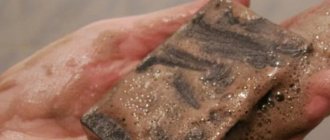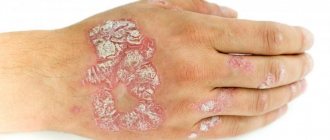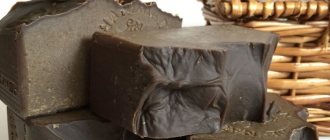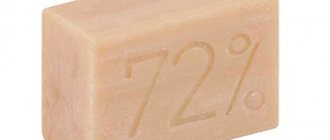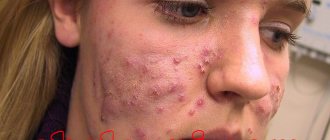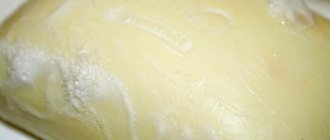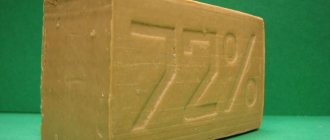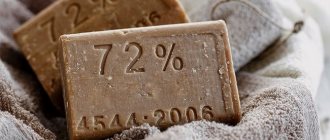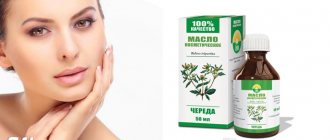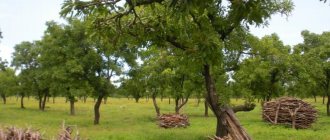Tar soap for acne is a simple, cheap and very effective remedy that helps fight acne. The advantage of this product is that it can be used at any age, and most importantly, for all skin types.
This soap combats oily skin, inflammation, and acne. But its main advantage is that it is cheap, which means everyone can afford to buy it. How does tar soap help? You will find the answer to this question in the article.
Properties
Tar soap for acne on the face and other parts of the body consists of the most ordinary laundry soap - 90% of it here. What else is included? It turns out that this is natural birch tar, which since ancient times has been a known remedy for combating bacteria on the surface of the skin and the diseases they cause.
This product has one feature - its smell. Despite the fact that it helps against acne , it has a rather unpleasant odor. But there is no need to worry about this, since literally 10 minutes after washing it disappears without a trace.
Such soap must be kept in a separate soap dish, and it must be closed, otherwise the unpleasant aroma will spread throughout the apartment.
When using tar soap, you should remember that it is ideal for oily skin, as it has a drying effect.
The same property helps with inflammation. But for those who have dry facial skin, this method should be abandoned, since overdrying is a very unpleasant phenomenon that causes even more problems than oily skin.
Misleading name
When you read the name of toilet soap on the packaging, the question involuntarily arises as to why it is actually called that. Maybe it is not intended for humans at all? However, his name is not at all connected with cleaning the toilet and came to us from France.
The main advantage of this detergent composition is its availability, since it is sold almost anywhere. Another advantage is that there are options for different skin types and this will allow you to choose the right one based on your individual characteristics.
Like any toilet soap, it contains fat of natural or synthetic origin, as well as alkali. Depending on the fatty base of the soap, its benefits will be determined. If the raw materials are natural, for example coconut oil or premium edible fats, then the foam will be soft and delicate. When the base contains more animal fats, the soap is suitable for dry skin and replenishes the loss of sebum.
Washing
Does tar soap help with acne? It helps, but only if you wash your face with it twice a day and regularly. If the skin becomes very dry after such a procedure, then you can wash your face in this way once a day - in the evening, before bed.
Before use, you need to lather it well and then apply it to the problem area. After this, rub with your fingers for 30 seconds and then rinse thoroughly. It is better to rinse off with warm running water.
After such a procedure, the skin must be wiped with a lotion that does not contain alcohol, and then apply a cream, and it is good if it is a special anti-acne cream.
Areas on the face such as the forehead, nose and chin require special attention when washing. It is on them that a large amount of fat accumulates and it is there that inflammation most often occurs. After washing your face once or twice, existing acne will certainly not disappear. But if you use this product every day, you can see the result in just a couple of weeks.
When your face or other part of the body is completely clean, you should stop using this soap, as the skin quickly gets used to it and after prolonged use, all problems may return again.
Glycerin soap from scratch
I wonder if the debate between the zero soap makers and the foundation soap makers will subside?
- Our soap is natural, but yours is not!
- But ours is beautiful and fragrant, but yours is “a la poop”!
But there is such a soap, it is both beautiful and fragrant, and its naturalness does not suffer. And it’s called “glycerin soap from scratch.” It has a very pleasant velvety structure, it can be poured into the most intricate mold, you can make unusual swirls with it, which are quite difficult to make with zero soap, especially prepared using a hot method. Glycerin soap is very gentle on the skin.
And today I will show you one way to make glycerin soap from scratch.
For work we will need the following materials:
coconut oil, palm oil, castor oil, shea butter, almond oil, sodium hydroxide, purified water, glycerin, ethyl alcohol 95%, sugar, sea buckthorn oil, bay laurel oil, tropical verbena (Litsea cubeba) essential oil, calendula petals.
Tools:
protective equipment - glasses, mask, gloves; thermometer, container for NaOH, spoon, spatula, strainer, blender, napkins, vinegar solution, electronic scales, indicator paper.
Recipe: the peculiarity of glycerin soap from scratch lies in the special selection of vegetable oils. I selected the following: palm, coconut, castor, shea, almond. They have proven themselves to be suitable for glycerin, maintaining transparency and hardness, providing good cleansing, softness and gentle care.
The total amount of water according to the recipe is 33% divided into 2 parts, 2/3 for sodium hydroxide solution, 1/3 for preparing sugar syrup.
To prepare glycerin soap, special components are used: alcohol (the higher the degree, the better) from 35% to 45%, glycerin 15%, sugar syrup (28% sugar, 10% water). The percentage is calculated from the total weight of the oils.
Usually, when preparing a recipe for the hot method, I add 1-2% excess fat. In this case, I set the excess fat to 0% in the calculator; I’ll explain why later.
Laurel and sea buckthorn oils, as well as tropical verbena essential oil - for overfat.
So, let's get started?
We weigh solid and liquid oils, put the solid ones in a water bath.
Combine with liquid oils and cool to the desired temperature.
While the oils are melting and cooling, weigh the lye. At the same time, we are wearing protective equipment, the hood is turned on and the window is open, and a vinegar solution is prepared nearby just in case of a fire.
The water for the solution was pre-cooled well. Place a container of water in the sink and carefully mix the lye and water. Pour the lye into the water in small portions and stir gently. Be careful! Be extremely focused and collected at this moment! Nothing should distract you.
Now you need to ensure that the temperature of the alkaline solution and the temperature of the molten oils become almost the same. In this case, there is no need to overheat the oil, and the temperature of 36-40 degrees suits me quite well.
Now you need to combine the alkaline solution and oils. Use a strainer to prevent undissolved sodium hydroxide crystals from getting into the oil.
Gently mix the mass. At first she looks like this.
After a few passes of the blender it will look like this.
And here is our beautiful, beautiful trail!
You like? I really like it!
Turn on the stove and place the saucepan with the future soap in a water bath.
Cover the pan with a lid and a napkin to prevent condensation from getting into the soap mass.
And we sit down to wait for the gel stage. Now you can relax a little and drink some coffee.
And here it is, the gel!
From the moment the saucepan is placed in the bath until the gel appears, different times pass. This depends on many reasons: the selection of certain oils, the amount of soap mass, the temperature of the bath and the environment. Wait until all the soap mass has entered the gel.
After this, heat the alcohol and carefully pour it in small portions into a saucepan with soap in a thin stream. Do this very carefully! Since alcohol vapors can ignite, especially if you have a gas stove. Leave 2-3 tablespoons of alcohol for the end of the procedure. At this moment, wear a mask or respirator, because strong alcohol vapors will be in the air
The soap begins, as I say, to “go crazy” - it boils, seethes and tries to “escape”. Therefore, choose a pan in such a way that the soap mass can increase several times.
Gently stir the mixture with a spatula and leave covered for 10 minutes.
During this time, take the sugar and remaining water.
Grind the sugar into powder in a coffee grinder, then it will dissolve better and faster in water.
Heat the syrup until the sugar is completely dissolved and pour into the soap mass through a strainer. The soap will start going crazy again. Leave it on for 5 minutes.
According to pre-compiled recipes, I will make 2 different soaps from the entire soap mass, which is why I set the superfat to 0. For one part I prepared laurel oil, for the second part - sea buckthorn oil. And mixed these oils with essential oil.
5 minutes after the sugar syrup, pour in the heated glycerin and the rest of the alcohol and leave the soap for 40 minutes. We leave - not in the sense of “without attention,” but in the sense of “alone.” The less you disturb the soap by stirring, the better.
It should turn out like this.
To prevent a film from forming on top, spray the surface of the soap with alcohol from a spray bottle.
Cool the mass slightly and you can paint it, flavor it and pour it into molds. You can pour the soap and cool it in one piece, and then cut it off and use the right amount. Glycerin soap hardens longer and is more problematic than regular soap from scratch. But don't give in and don't put the soap in the refrigerator. Transparency will disappear.
And here is our soap participating in the master class.
With sea buckthorn oil and calendula petals.
With laurel oil.
Yes, it is not as transparent as the soap from the base, but we don’t need to read newspapers through it, we wash ourselves. However, you will notice that it is very different from regular hot process soap.
It turned out to be imperfectly transparent because I poured in the superfat at the end (as the recipe called for it). If I had put SF directly into the calculator or after the gel stage, the soap would have been clearer.
For example, like this.
That's all, actually)
It is believed that a lot of waste is generated during the making of glycerin soap. But in a good economy everything will do, so
I filled small loofah molds with the remaining soap mass - an excellent soap for rough skin on the heels.
And this is foam and undissolved soap, which I collected with a slotted spoon, added dry mustard, a drop of sunflower oil and put into molds. I made a wonderful laundry soap for washing dishes and kitchen surfaces.
I hope you find this master class useful.
Your Maria Sotnik.
Another variant
If the smell of tar is difficult for you to tolerate, then you can use ordinary laundry soap, which also copes well with a wide variety of skin rashes, but you will have to wait a little longer for the desired effect.
When laundry soap is used for acne, an alkaline environment is created on the surface, which is destructive to all microbes and bacteria. Along with the germs, all the dirt is washed away, cleansing the pores, which means that the reappearance of acne is excluded.
Attention! Both of these products do not contain anything synthetic, which means that the occurrence of an allergic reaction is excluded.
There will be no such thing as premature skin aging. But you can use laundry soap only 2 times a week, due to the fact that it dries out greatly.
Soap for acne - contraindications
When not to use soap:
- very dry and irritated skin;
- the presence of wounds, infections, eczema, dermatitis, psoriasis;
- allergic reactions;
- intolerance to one or more soap components.
Microflora disturbance
Antibacterial soap destroys not only harmful but also beneficial bacteria. It must be alternated with other types of cleansers.
Change in pH level
In normal condition, the skin environment is slightly acidic, on average 4.5. Any soap is alkali. For example, the pH of laundry soap is 11. It is not recommended to wash your face with it every day.
When the acid-base balance changes, the skin becomes thin, dried out, irritated, and peeling appears. Dehydration causes excess fat production. The skin becomes like oiled paper.
It is necessary to moisturize the skin generously while treating acne with soap.
Reviews
Natalia. “The smell is really terrible! After the first use I decided not to use it again. I’d rather buy something more popular at the pharmacy with a normal scent.”
Oksana. “This is a real salvation for me, since my acne on my back stopped itching after the first use of tar soap. And after a week I noticed that there were much fewer of them! I think this is the best remedy for such a scourge.”
Oleg. “I read about this method on the Internet and decided to try it. The acne went away quickly, but now there is another problem - dry skin. I don’t even know which is better...”
Nikolai. “I would never have thought that such a cheap drug could help no worse than the most expensive drug! I tried washing my face with tar soap - the acne went away!!! I’m very happy about this fact.”
So everything is quite ambiguous, you need to take into account the properties of your body and know when to stop.
The benefits of natural pine soap
- Cleanses the skin better than other modern products.
- Helps protect facial skin from acne due to its ability to accelerate the renewal process of its cells.
- Is a natural antiseptic.
- The natural aroma of pine needles relieves headaches, irritability, and helps you fall asleep, which is why it is better to take a shower or bath with soap made from these ingredients in the evening.
